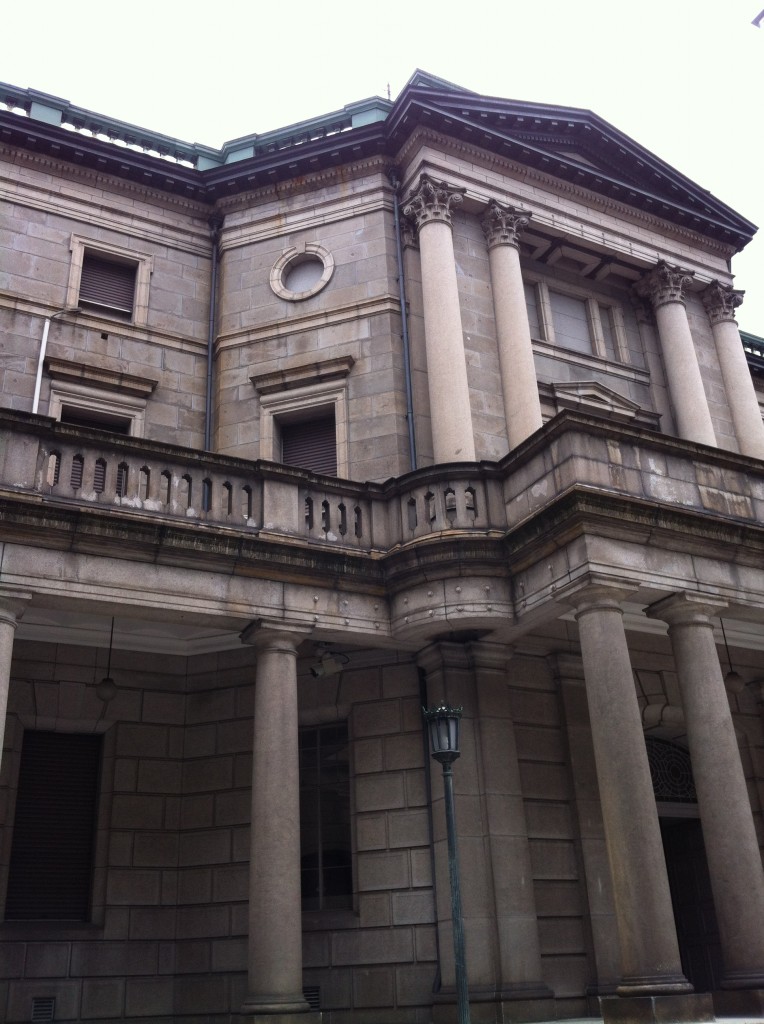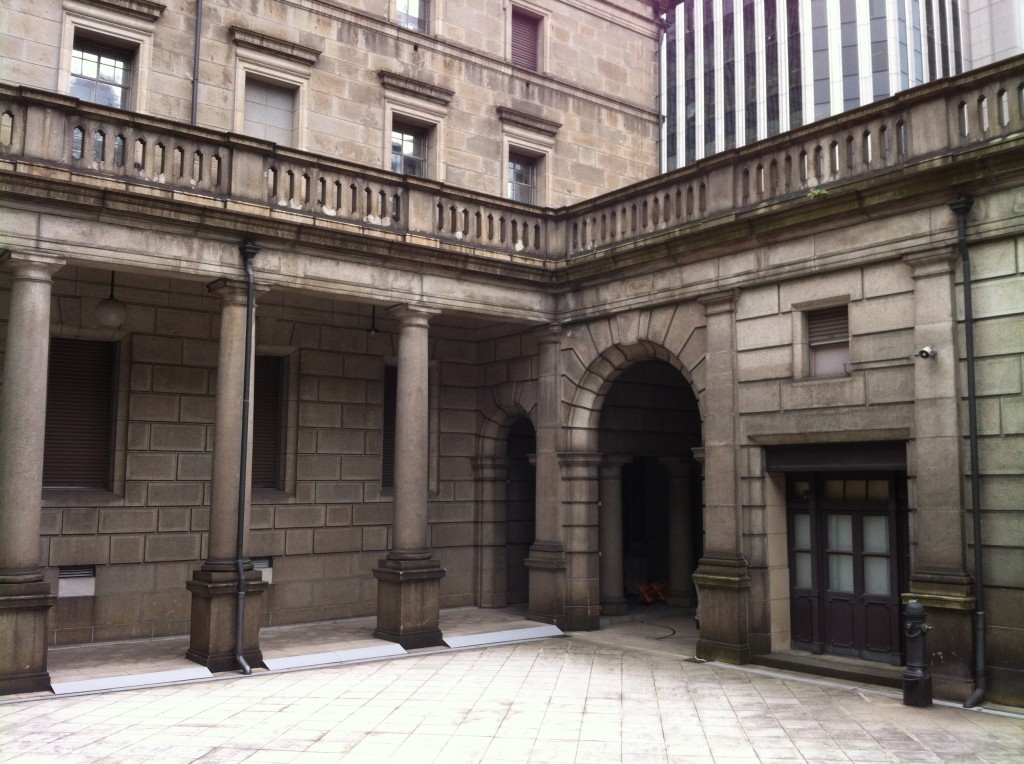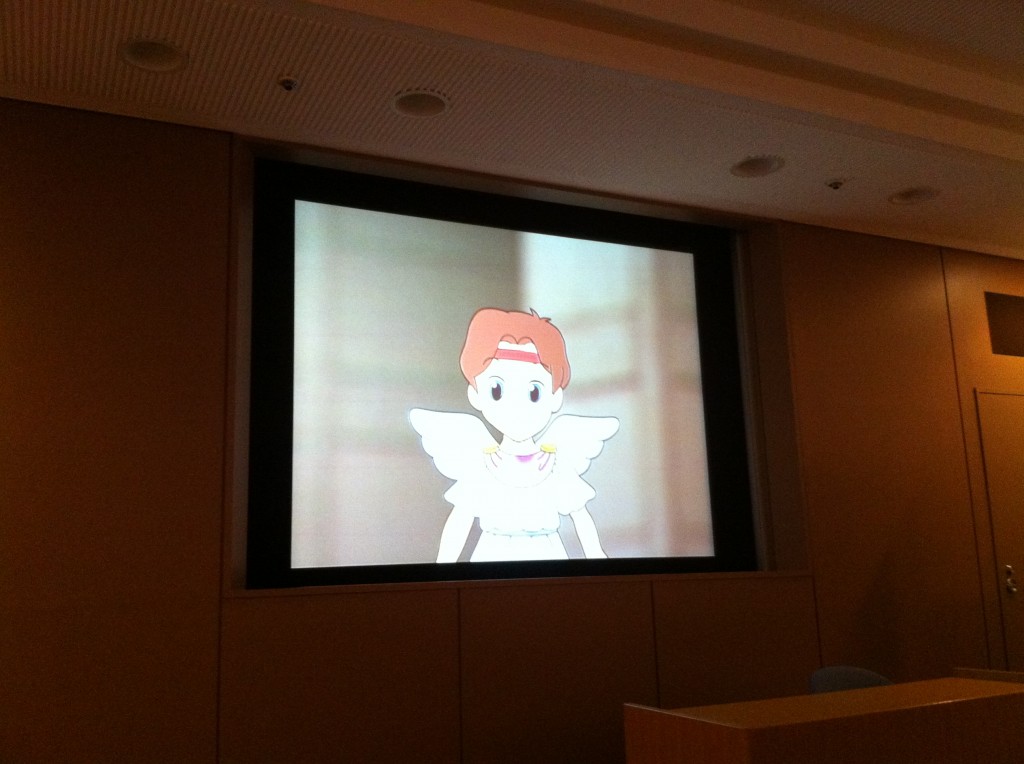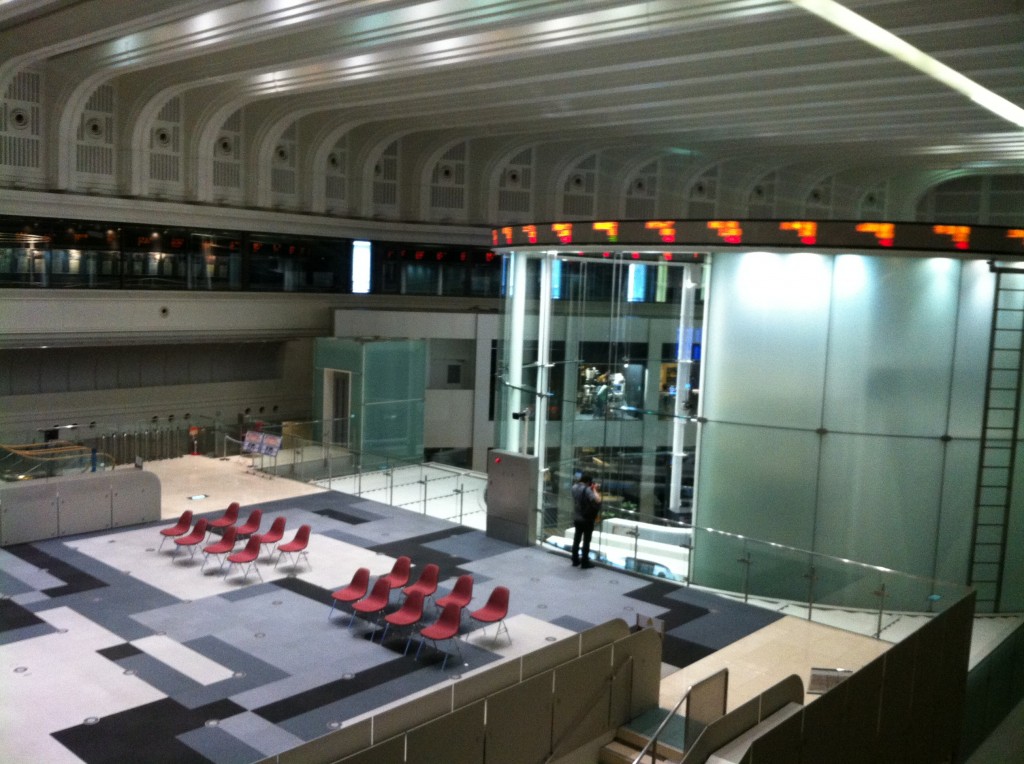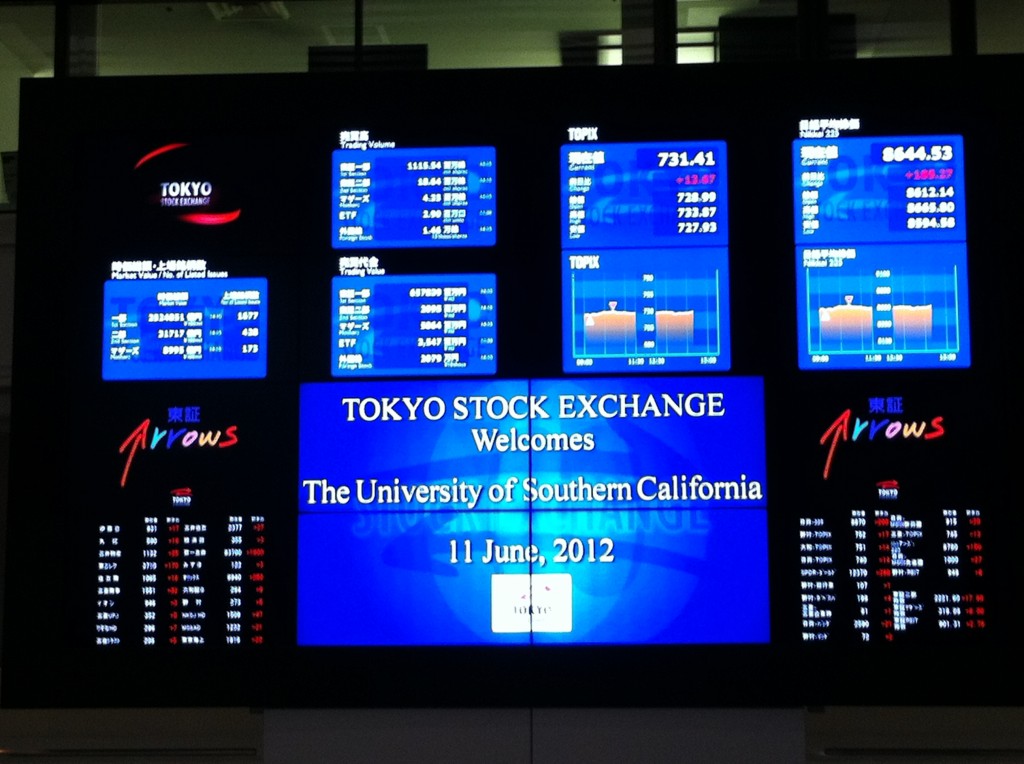By Ki Bum Kim
To kick off our third week in Japan, our class visited the Bank of Japan (BOJ) and the Tokyo Stock Exchange (TSE) to learn more about some of the major symbols of Japan’s economy. As a business major in the Marshall School of Business, I had been looking forward to these visits so that I could gain a more international perspective on fiscal policy and trading, especially since I took a “Trading and Exchanges” course with Professor Larry Harris back at USC.
Our first stop was the Bank of Japan, which was only a couple of subway stations away from the Sakura Hotel, where we are staying in Tokyo. As we entered the courtyard of the fortress-like building, we could see why the BOJ is widely known as a significant cultural landmark. The stately Old Building, built in 1896, contrasted greatly with the modernized buildings that surrounded the bank. As our guide explained later on in the tour, the bank had survived the Great Earthquake of 1923 and the firebombing during World War II, which made it one of the few buildings that remained from the Meiji era.
However, despite how impressive the bank looked from the outside, the most intriguing part of the building may have been the underground vaults. Protected by three doors, including the enormous 25-ton outer door, the vault had many unique features that represented some of the most cutting-edge technology at the time. For example, the architect included a feature that allowed bank officials to reroute water from a nearby river to flood the vault as the last line of defense from thieves. Although the bank floor and the hall of past governors were interesting to see as well, walking through the vault was definitely one of the highlights of the day. (Unfortunately, the BOJ didn’t allow visitors to take pictures, so you’ll have to visit there yourself to see what it looks like!)
After a quick lunch at a nearby shopping complex, we walked over to the Tokyo Stock Exchange, where we were guided into a room for a video presentation. The video, led by a cartoon character named “Arrows,” covered the basics of trading and described the transformation of the TSE from a trading floor to an electronic exchange.
Because the TSE is now an electronic exchange, the only people working there were a few regulators that looked over the stock exchange to ensure that there was no fraudulent activities happening in the markets. This meant that we were actually able to walk through and see most of the entire stock exchange (and take lots of pictures without bothering people).
While we were leaving the TSE and getting ready to call it a day, I realized how important the BOJ and TSE are to the economic infrastructure in Japan. Through the changing conditions both in Japan and the world as a whole, the BOJ and TSE were two of the few constants that led the country for the past century. As we learn more about the Japanese economy in our classes this week, I’m sure that our visits will help us gain a greater understanding of the BOJ and TSE’s role in Japan’s economic development.

